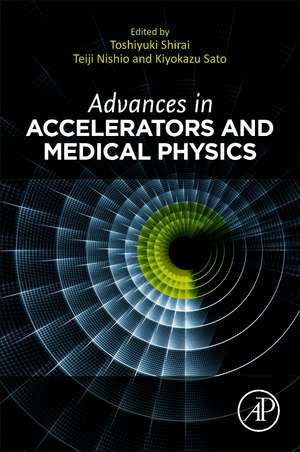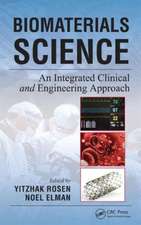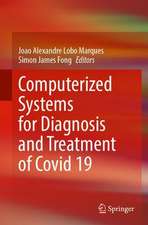Advances in Accelerators and Medical Physics
Editat de Toshiyuki Shirai, Teiji Nishio, Kiyokazu Satoen Limba Engleză Paperback – 25 mai 2023
Heavy ion radiotherapy used for cancer treatment involves the acceleration of carbon ions to 70% of the speed of light to deliver radiation to cancer cells and cause cell death. This therapy is also expected to be effective in cancers that are difficult to treat or do not respond to conventional treatments. Furthermore, this therapy is associated with several advantages such as shorter treatment duration and fewer side effects.
- Offers a deep dive into the fundamental accelerator and medical physics techniques and technologies used in cancer radiotherapy
- Considers the updated status of hospitals and clinical facilities, safety, education and future research trends
- Covers advanced research and development of X-ray therapy, electron beam therapy and particle therapy
Preț: 834.18 lei
Preț vechi: 878.08 lei
-5% Nou
159.62€ • 166.65$ • 132.11£
Carte disponibilă
Livrare economică 14-28 martie
Livrare express 27 februarie-05 martie pentru 36.38 lei
Specificații
ISBN-10: 0323991912
Pagini: 384
Dimensiuni: 152 x 229 x 24 mm
Greutate: 0.51 kg
Editura: ELSEVIER SCIENCE
Public țintă
Graduate students, researchers, and professionals in medical physics, medical dosimetry, radiation technology, radiotherapy technology, and radiologyCuprins
SECTION A X-ray therapy and electron beam therapy
1. Electron accelerator and beam irradiation system
2. External beam radiation therapy
3. Immobilization and patient positioning
4. Respiratory motion management
5. Radiation treatment planning (photon and electron beam therapy)
6. Dosimetric verification
7. Adaptive radiotherapy
SECTION B Particle therapy
8. Proton cyclotron accelerator and line scanning irradiation system
9. Proton synchrotron accelerator and spot scanning irradiation system
10. Carbon-ion synchrotron accelerator and raster scanning irradiation system
11. Quantum scalpel
12. Irradiation and therapy methods
13. Management of patient position and respiratory motion
14. Treatment planning
15. Dosimetric verification
16. Radiation protection
SECTION C Boron neutron capture therapy (BNCT)
17. Principle and current status
18. Proton linear accelerator and lithium target system
19. Proton linear accelerator and beryllium target system
20. Proton cyclotron accelerator and beryllium target system
21. Irradiation method and the immobilization and positioning of patients (head and neck)
22. Therapy method, irradiation method, and immobilization and positioning of patients (brain)
23. Therapy method, irradiation method, and immobilization and positioning (skin)
24. Treatment planning
25. Dosimetric verification
26. Future works
SECTION D Molecular imaging and therapy
27. Electron linear accelerator for medical radionuclide production
28. Cyclotron accelerators for the production of medical radionuclides
29. Dosimetry in therapy using radiopharmaceuticals
SECTION E Novel technologies
30. FLASH radiotherapy
31. Laser-driven ion accelerator
Descriere
Advances in Accelerators and Medical Physics provides in-depth, comprehensive coverage of basic concepts in X-ray therapy, electron beam therapy, particle therapy, BNCT, RI diagnosis and therapy. Each section of the book presents the current state of the field, details about safety and education, and future trends in advanced research. This book will serve as a key resource for researchers and students to find all information on cancer radiotherapy techniques and methods.
Heavy ion radiotherapy used for cancer treatment involves the acceleration of carbon ions to 70% of the speed of light to deliver radiation to cancer cells and cause cell death. This therapy is also expected to be effective in cancers that are difficult to treat or do not respond to conventional treatments. Furthermore, this therapy is associated with several advantages such as shorter treatment duration and fewer side effects.
- Offers a deep dive into the fundamental accelerator and medical physics techniques and technologies used in cancer radiotherapy
- Considers the updated status of hospitals and clinical facilities, safety, education and future research trends
- Covers advanced research and development of X-ray therapy, electron beam therapy and particle therapy


















